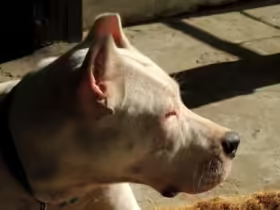Training your dog is one of the most rewarding aspects of dog ownership. Whether you’ve adopted a playful puppy or a stubborn older dog, effective training helps create a strong bond and ensures a well-behaved pet. Each breed may have different temperaments, but with the right techniques, any dog can learn to follow commands, develop good behavior, and become a loyal companion.
In this guide, we will explore the essentials of dog training, breaking down the best techniques and tips for every breed.
1. Understanding the Importance of Dog Training
Before diving into the techniques, it’s important to understand why dog training is essential for both owners and pets:
- Improved Communication: Training teaches dogs how to respond to your commands, helping build a strong bond between you and your pet.
- Better Behavior: Dogs that are properly trained are less likely to engage in destructive behaviors like chewing furniture, excessive barking, or jumping on people.
- Safety: Trained dogs are less likely to run off in dangerous situations or get into fights with other animals.
- Socialization: Dog training helps your pet become more comfortable around other animals and people, reducing aggressive behavior.
2. Essential Training Techniques for Every Dog
Dog training can be tailored to suit any breed, but some techniques are universally effective. Below are some foundational training methods that every dog owner should know:
a. Positive Reinforcement
Positive reinforcement is widely regarded as the most effective and humane training method. This technique involves rewarding your dog when they perform the desired behavior, reinforcing their actions with treats, praise, or toys.
- How it works: When your dog sits, for example, you immediately give them a treat and say “good sit.” This teaches your dog that sitting leads to positive outcomes.
- Benefits: It encourages your dog to repeat good behaviors, and it strengthens your bond with your pet.
b. Clicker Training
Clicker training is a type of positive reinforcement that uses a sound—a “click”—to mark desired behavior. After the click, a reward is given to the dog.
- How it works: First, you “charge” the clicker by clicking and giving a treat so the dog associates the sound with something positive. Then, you click when the dog does something right.
- Benefits: Clicker training is effective because the dog receives instant feedback, helping them learn faster.
c. Lure and Reward Training
Lure and reward training involves using a treat or toy to “lure” your dog into the desired position or behavior and then rewarding them once they comply.
- How it works: For example, if you want your dog to lie down, hold a treat in your hand and slowly lower it to the ground while saying “lie down.” Once the dog lies down, give them the treat.
- Benefits: It works well for teaching basic commands like “sit,” “stay,” “come,” and “down.”
d. Command and Release
Command and release training focuses on teaching your dog to respond to commands and stay in the desired position until released.
- How it works: You give a command, such as “sit,” and after a short pause, say “release” or another word to signal that the dog can move.
- Benefits: This method helps instill discipline and teaches your dog to stay focused.
3. Training Techniques Based on Breed Traits
Different dog breeds have unique temperaments and abilities, so tailoring training techniques to suit their characteristics is crucial. Below are specific tips for popular breeds:
a. Labrador Retrievers
Labradors are energetic, intelligent, and eager to please, making them highly trainable. However, they can be easily distracted by their surroundings.
- Training Tip: Use short, engaging training sessions to maintain their attention, and focus on positive reinforcement.
- Best Techniques: Clicker training works well for Labradors, as they quickly associate the click with rewards.
b. German Shepherds
German Shepherds are known for their loyalty and intelligence. They thrive in structured environments and enjoy having a job to do.
- Training Tip: Be consistent with commands and provide clear boundaries. Mental stimulation is key for this breed.
- Best Techniques: Command and release training, combined with regular obedience exercises, helps keep them engaged and disciplined.
c. Beagles
Beagles are curious and independent, driven by their strong sense of smell. They can be stubborn during training, but they respond well to food rewards.
- Training Tip: Use scent-based games and challenges to engage them, and always train in a distraction-free environment.
- Best Techniques: Lure and reward training with plenty of treats helps guide this breed.
d. Bulldogs
Bulldogs are known for their stubbornness, but they’re also very affectionate. Training can be a bit slow, but with patience, they can learn basic commands.
- Training Tip: Keep sessions short and fun, using treats as a motivator.
- Best Techniques: Positive reinforcement works best, focusing on simple, repeatable commands like “sit” and “stay.”
e. Border Collies
Border Collies are one of the smartest and most energetic breeds. They excel in obedience and agility training but need mental and physical stimulation.
- Training Tip: Challenge their intelligence with advanced tricks and agility courses.
- Best Techniques: Clicker training and command-based training work well, especially when combined with agility exercises.
4. Common Training Challenges and How to Overcome Them
Training a dog is not always smooth sailing. Here are some common challenges and how to tackle them:
a. Distractibility
Many dogs, especially puppies, are easily distracted by their environment. To combat this, train in a quiet area with minimal distractions and gradually increase the difficulty by introducing more stimuli over time.
b. Stubbornness
Certain breeds, like Bulldogs and Basset Hounds, are naturally more stubborn. In such cases, patience is key. Break training sessions into short, fun exercises and use highly desirable treats to keep their attention.
c. Aggression
If your dog displays aggressive behavior during training, it’s essential to identify the root cause. Aggression often stems from fear or a lack of socialization. Consult with a professional dog trainer or behaviorist to address aggressive tendencies safely.
d. Separation Anxiety
Dogs suffering from separation anxiety may struggle with commands that involve leaving your side, such as “stay.” Practice separation gradually, starting with very short distances and increasing over time, always rewarding your dog for calm behavior.
5. Essential Commands Every Dog Should Know
Every dog, regardless of breed, should learn these essential commands:
- Sit: One of the most basic and useful commands, teaching your dog to sit helps control behavior in various situations.
- Stay: This command teaches patience and discipline.
- Come: An essential safety command, especially when off-leash.
- Down: Helps calm a dog and is useful in crowded or chaotic situations.
- Heel: Teaches your dog to walk beside you calmly, without pulling on the leash.
- Leave It: Prevents your dog from picking up potentially dangerous objects or getting into trouble.
6. Advanced Dog Training Tips
Once your dog masters basic commands, you can move on to more advanced training:
a. Off-Leash Training
Off-leash training is perfect for dogs with reliable recall. Start in a fenced area and practice the “come” command. Reward your dog heavily when they return to you.
b. Agility Training
Agility training involves teaching your dog to navigate through an obstacle course. It’s mentally stimulating and great for high-energy breeds like Border Collies.
c. Trick Training
Teaching your dog tricks like “roll over,” “play dead,” or “shake” is fun and builds your dog’s confidence. Use positive reinforcement and patience to encourage these tricks.
7. Tools to Assist Dog Training
Using the right tools can make training easier. Here are some helpful accessories:
- Leash and Collar: A standard leash and a well-fitting collar are essential for leash training.
- Harness: A harness can give you more control, especially for dogs that tend to pull.
- Clicker: A small device that produces a clicking sound to mark good behavior.
- Treat Pouch: Keeps treats readily available during training sessions.
- Training Crate: A safe space for your dog that helps with crate training and behavior management.
8. How to Train a Dog at Different Life Stages
a. Puppy Training
Puppy training should start as early as 8 weeks. Focus on socialization, basic commands, and housebreaking. Puppies have short attention spans, so keep sessions short and fun.
b. Adult Dog Training
Adult dogs can still learn new tricks and commands. Training sessions should focus on reinforcing good behavior and teaching new skills like advanced commands or agility.
c. Senior Dog Training
Senior dogs may have physical limitations, but training can keep their minds sharp. Focus on low-impact commands and mental stimulation.
Conclusion
Training is an ongoing process that requires patience, consistency, and understanding. Each dog is unique, and while some breeds may learn faster than others, all dogs have the potential to be well-trained with the right techniques. Whether you’re starting with a new puppy or refining an older dog’s skills, the methods outlined in this guide will help ensure a strong bond and a well-behaved, happy pet.











Leave a Reply